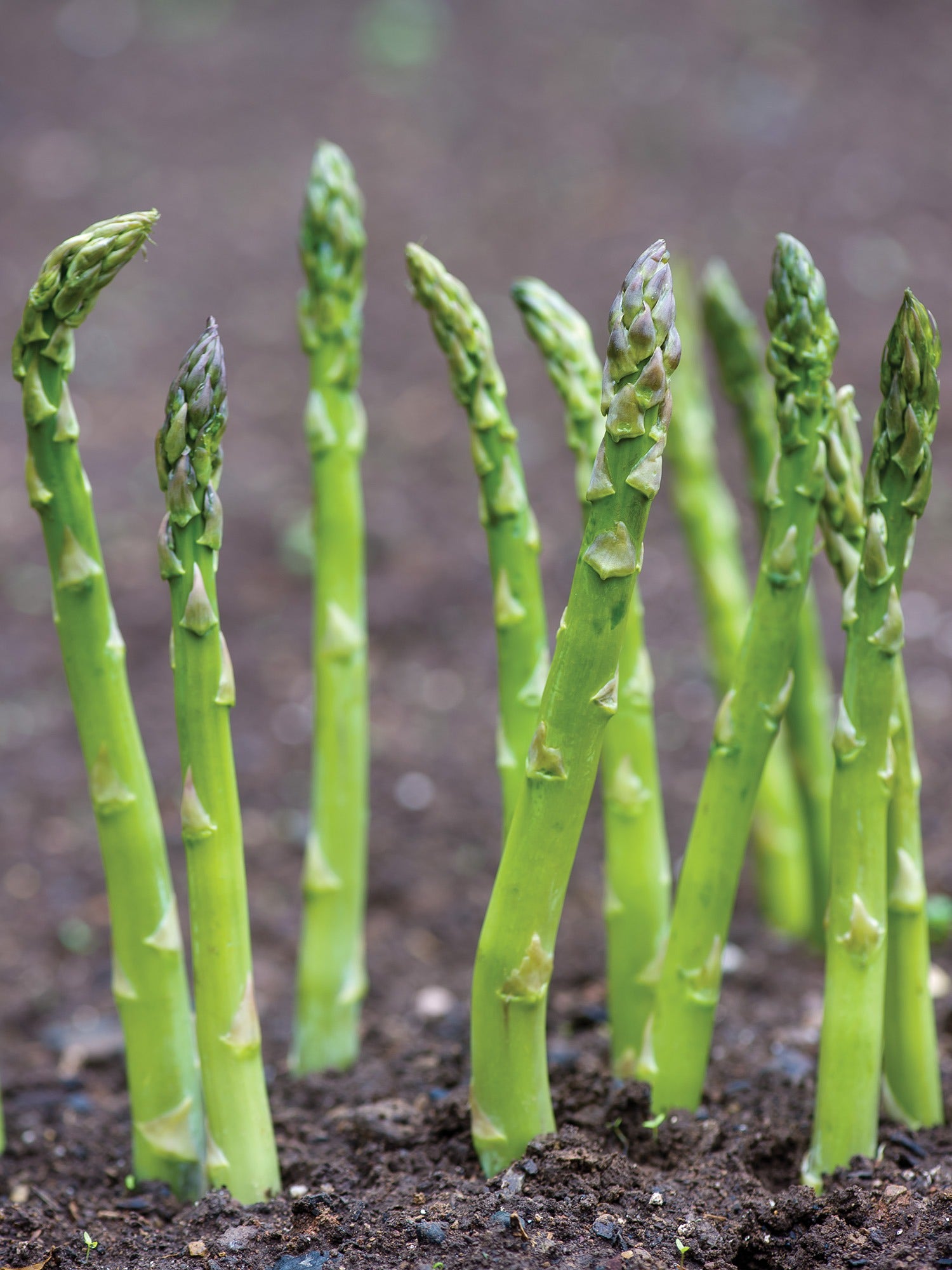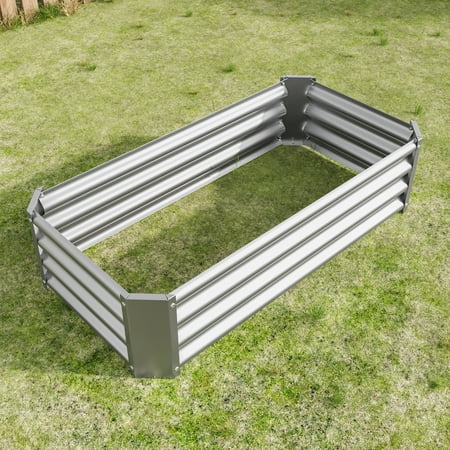When Should You Plant Asparagus? 6 Growing Tips for an Early Harvest of This Seasonal Treat
Tender spears of easy-to-grow asparagus taste so much sweeter when homegrown, and spring is the perfect time to plant this favorite delicacy
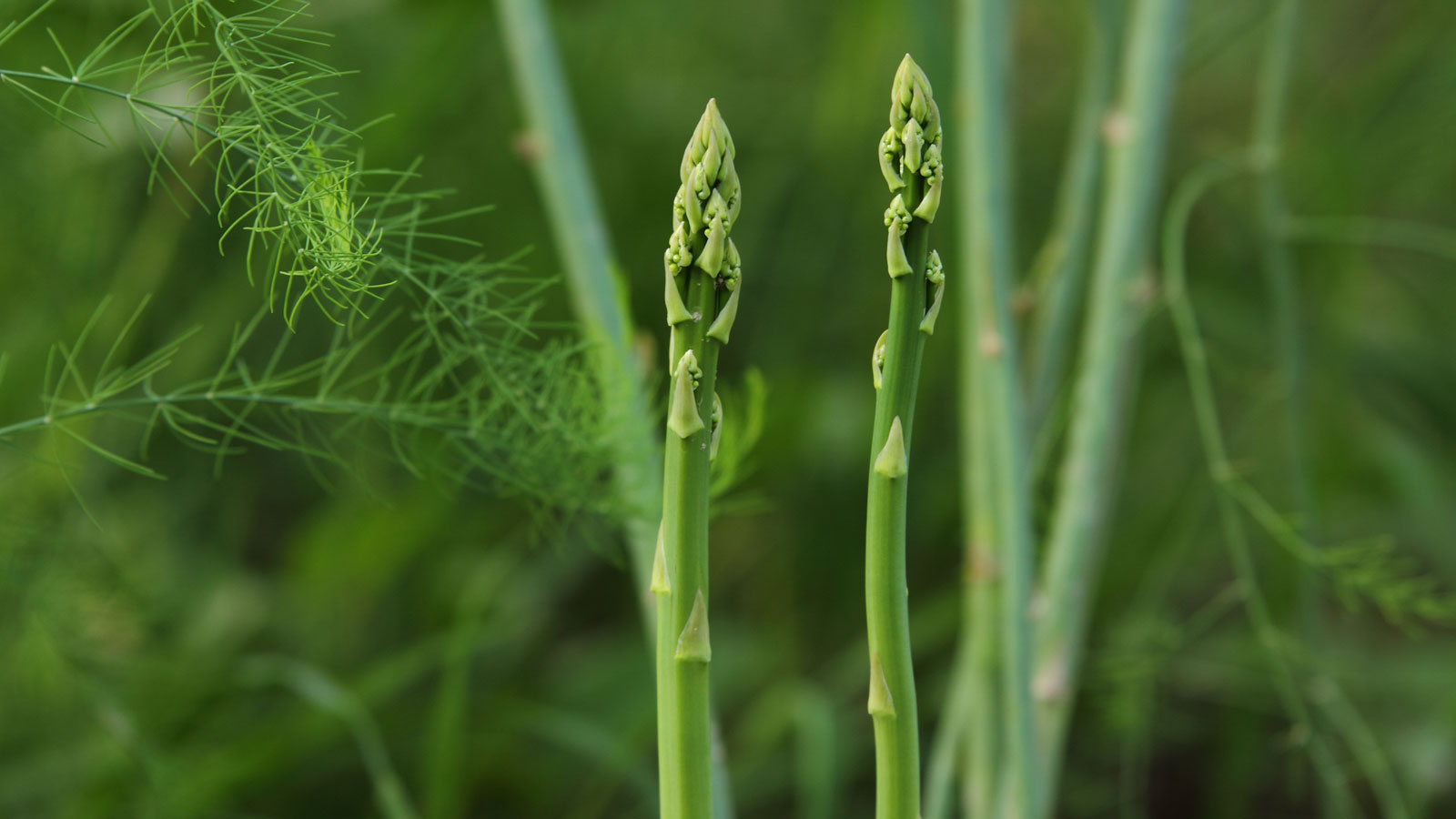
When fresh asparagus starts to appear on restaurant menus it's always a sign that spring is really here. So imagine how special it will be when you plant your own and the first new shoots of asparagus start breaking through the soil as one of the first vegetables to harvest in spring.
As well as being firmly at the top of our list of extra-special things to eat, asparagus has biodiversity benefits too. It's a long-lived perennial (in zones 3-8) that comes back year after year, and in spring bees love to feed on pollen from the flowers. In addition, the clouds of delicate fern-like foliage add a beautiful ornamental detail to your vegetable garden or container planting.
It's important to plant asparagus at the right time and in the right growing conditions, especially as the space you choose will be their home for many years to come due to their long-lived nature. So if you're wondering when to plant asparagus the good news is now is good, and it isn't challenging even for beginner gardeners.
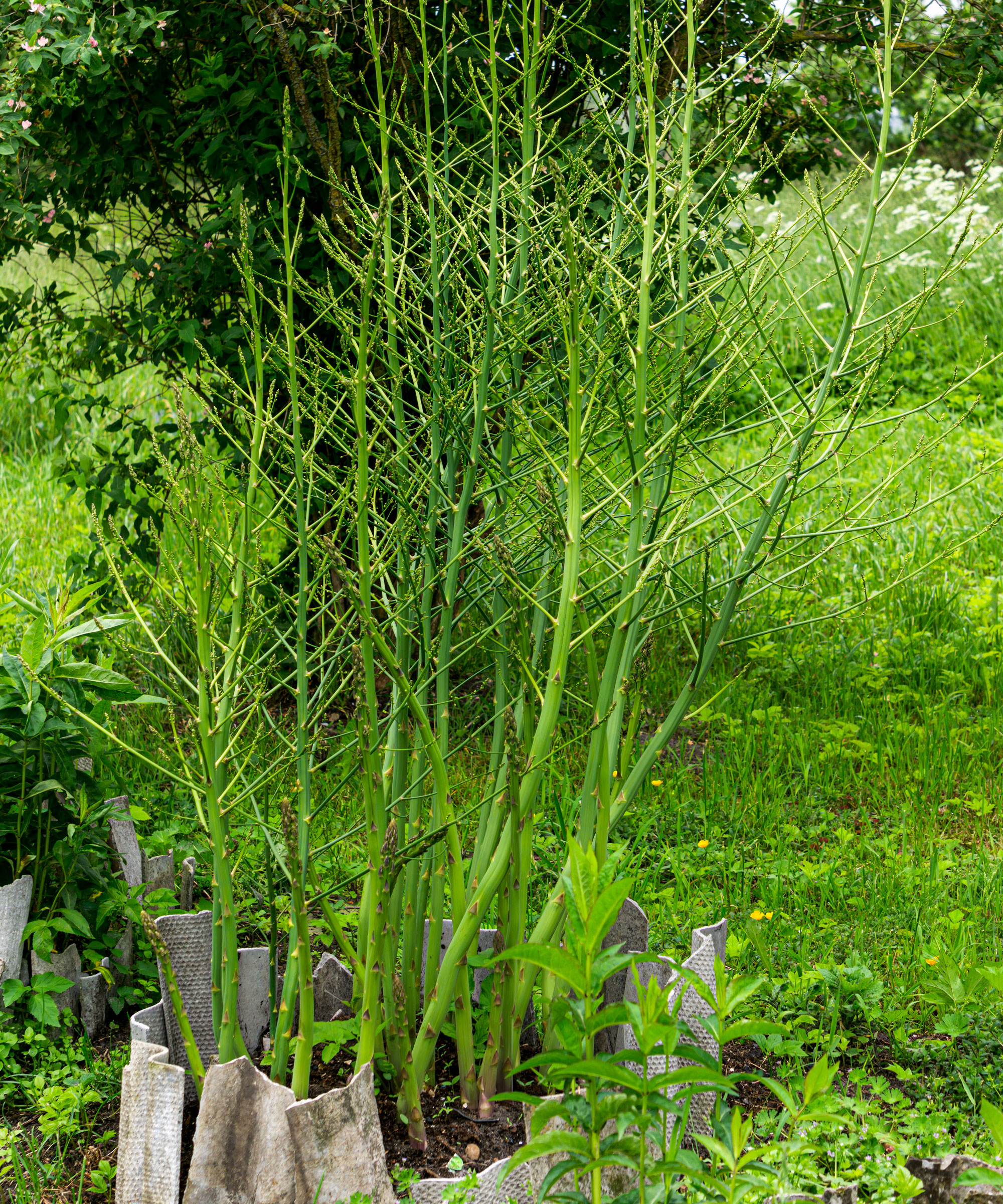
When to plant asparagus: our 6-point guide
'You can plant asparagus in the early spring, usually between late February and early May, depending on your climate zone and the local weather,' says Charmaine Peters, farm director at Arden in South Florida. 'Planting asparagus in early spring gives the roots time to settle and grow in the cool soil before the warmer weather sets in, encouraging strong and healthy plant growth.'
Full disclosure: asparagus plants are not the quickest vegetable to grow. But it's well worth the wait as once they get established your plants will be super-productive and deliver season after season, so planting these vegetables in February can help you get a headstart. You can also propagate asparagus by lifting and dividing plants in spring. There are three main ways to grow asparagus, with some producing quicker results than others.
Follow our 6-point guide to make sure you know when to plant asparagus and how to do it right.
1. Choose the easiest way to grow asparagus

If you want to plant now it's easiest to pick up asparagus crowns that are widely available in nurseries and garden centers in spring, and are sold as bare root plants. These are the thick, fleshy roots of a matured asparagus plant. Always choose fresh looking, firm and healthy specimens.
The Livingetc newsletters are your inside source for what’s shaping interiors now - and what’s next. Discover trend forecasts, smart style ideas, and curated shopping inspiration that brings design to life. Subscribe today and stay ahead of the curve.
Don't be confused by the availability of both male and female asparagus plants when you're choosing. The spears we eat are 'leaf buds' which do not need pollinating, so you can choose either variety. Female plants are not as strong as male ones and produce weedy seedlings, but the spears tend to be larger.
'Don’t plant crowns too early because the soil might be too cold,' says Charmaine Peters. 'This can hinder their ability to grow well and may even harm them. Plant asparagus crowns when the soil temperature reaches above 50° Fahrenheit.' Add a soil thermometer, like this one from Amazon, to your gardening kit if you don't already have one.
By the way, the white asparagus bundles seen in gourmet stores are 'forced', which means they are simply kept from the light as it grows, rather than being a different variety from the green type.
2. Select a planting site

As asparagus is a perennial, you'll need to create a special place in the vegetable garden if you have one, or build a separate bed for it. Container gardening in raised beds work really well for asparagus and means you can grow a lot of plants even if your growing space is limited. Moving asparagus once planted is not recommended, as it disturbs the roots and delays your harvesting date.
Whether you choose to grow asparagus crowns, or opt for seeds or young plants (more about this later), your asparagus bed should always be sited in full sun, with well-prepped weed-free soil that's organic and well-drained.
'Pick the planting location carefully, as asparagus can grow in the same spot for up to 20 years,' says Julia Omelchenko, botany expert at Plantum. 'It should be sunny, well-drained, and protected from strong winds.
Julia suggests preparing the soil for planting in fall by tilling it and amending it with compost. If it’s dense or clay-heavy, mix in some sand as well.
When choosing a planting site remember the ornamental value of asparagus too. 'Asparagus serves to visually fill spaces in the garden,' says Christina Chung, author of The Layered Edible Garden. 'It provides a contrast with large, bold-textured plants.'
3. Plant asparagus crowns in prepared trenches
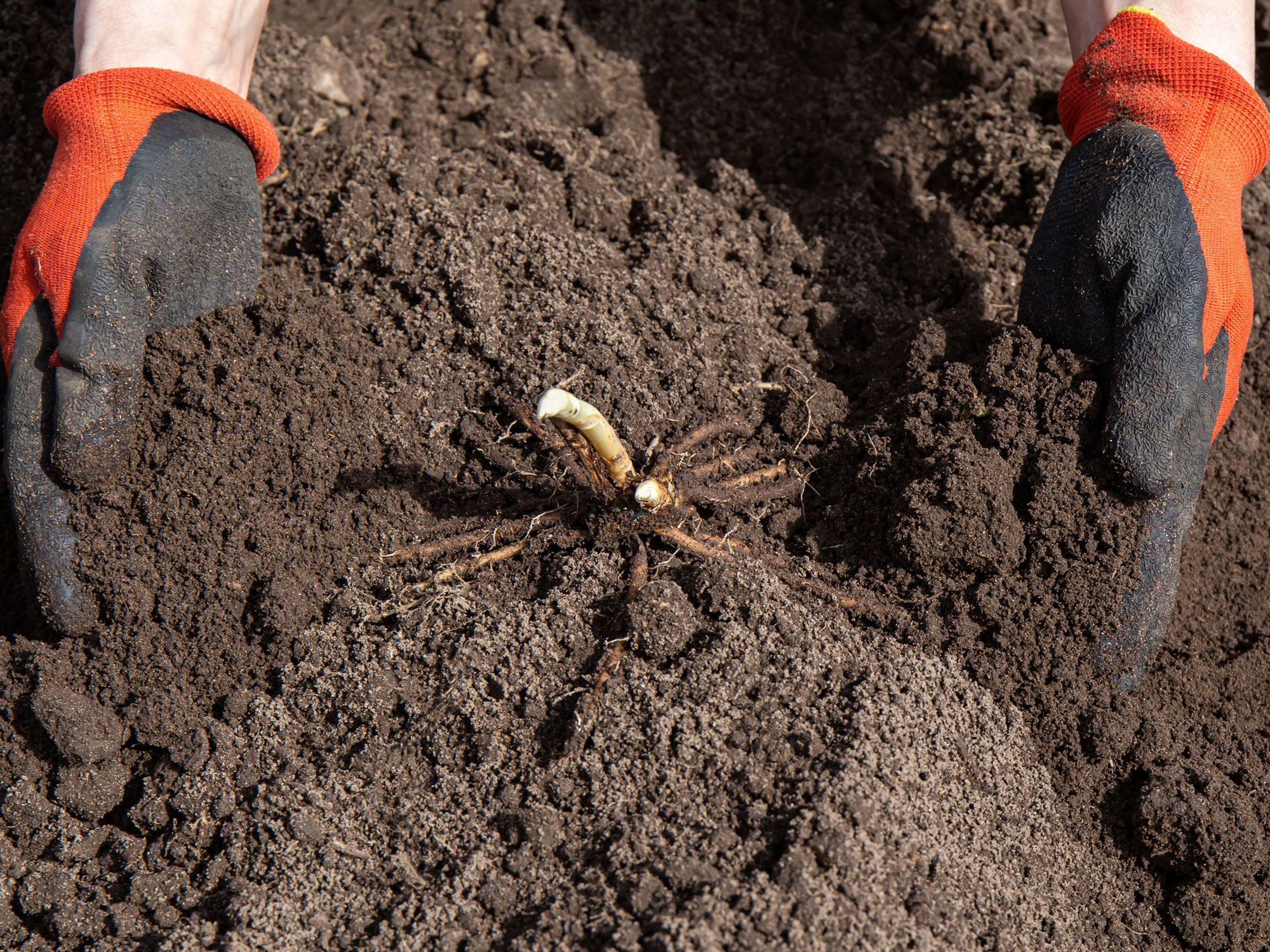
In spring, plant asparagus crowns in prepared trenches. It's a good idea to soak them in water for a couple of hours before planting.
'In the meantime, dig out their planting holes,' says Julia Omelchenko. 'I suggest making them 12 x 12 inches wide and 12–20 inches deep. Pour soil into the holes and form small “mounds” of it in the center, then place the crowns on top of each mound, carefully spreading the roots around them.'
Backfill the rest of the holes with soil afterwards. By doing this, you'll guarantee that the roots have plenty of space to grow, plus are surrounded by fertile soil on all sides.
Water the crowns well after planting, and weed regularly. 'Alternatively, place a layer of mulch made from peat, straw, or coconut husk chips,' suggests Julia. 'Mulching will both improve moisture retention and keep your asparagus weed-free.'
Continue to water the plants frequently, around once a week, and plants should develop in around 6-8 weeks.
4. Alternatively try growing seeds or young plants

You can also start asparagus from seeds, like these from Burpee, but it will take more time and effort compared to planting crowns, and it will add a couple of years to the time it takes until you can harvest a crop. You can sow seeds either indoors or directly in the ground in spring when the soil has warmed up.
'On average, the seeds take about a month to germinate,' says Julia Omelchenko. 'You can accelerate the process by soaking them in warm water for 3–5 days. Change the water out daily. Soaking the seeds should reduce germination time to about 2 weeks.'
Prepare the asparagus bed by removing weeds and working organic matter into the soil, then level and smooth. Sow seeds evenly and thinly 2 inches apart, 1 inch deep. Seedlings will emerge in around 10-14 days, and will need thinning out to about 12 inches apart when seedlings have at least two sets of leaves.
Another option is to buy seedling plants from the nursery or garden center. The asparagus bed should be prepared as per for growing seeds. Dig a hole for each plant large enough to accommodate the root ball. Set plants in the bottom, spacing centers 18 inches apart in rows 2-4 feet apart. Remember to water well to help your new plants get established.
5. Choose from the best varieties

There are several standout asparagus cultivars that score high with our experts.
'One of the best heirloom varieties of asparagus is 'Mary Washington', says Charmaine Peters. 'It's known for its consistent and abundant yields, making it a reliable choice for home gardeners. It can also adapt to a variety of climates and soil conditions.' Try 'Mary Washington' from Burpee.
If you live in a colder region, consider 'Millennium' asparagus, suggests Charmaine. 'Given the right conditions, it can produce high yields and thrive even in harsh winter conditions.'
Alternatively if you live in a warmer region, 'Jersey Knight' can grow well. 'It's resistant to common asparagus diseases,' says Charmaine, 'These include fusarium wilt and crown rot, which can be more prevalent in warmer regions with higher humidity levels.' Julia Omelchenko also flags up the 'Atlas' and 'Apollo' varieties as ideal for growing in warm climates.
If flavor is your priority, 'Purple Passion' is a favorite of both Charmaine and Julia, as well as among chefs because of its sweet and nutty taste, and distinct purple color. You can find purple asparagus at Walmart, as well as nurseries.
6. Harvest asparagus at the right time

Tempting though it might be, it's important not to harvest asparagus the first year. Allow the plants to grow and get stronger for the following year. When plants are two years old you can harvest them for a short period. In the third year, you can harvest them for a period of around four weeks.
Be sure not to cut back plants after harvest. Instead allow them to grow tall and ferny for as long as possible before first frost. This green foliage makes food so your plants will be even stronger next year.
In late fall the foliage will have turned brown so cut plants back to ground level. If you live in a cooler climate mulch the ground for extra protection.
Can you plant asparagus in fall?
Yes, you can plant asparagus in fall to get a head start on the growing season but you will need to do it while the soil is still warm so the plants have time to get established before cooler temperatures set in.
Although spring is more usual if you're wondering when to plant asparagus, some varieties do respond well to fall planting. Try the cold tolerant cultivar 'Guelph Millennium', which has high yields and will grow in any soil.
Can you grow asparagus in a container?

Yes you can grow asparagus in containers, but keep in mind that there are a few precautions to take when doing so.
'Asparagus plants have a deep root system, so you will need a container that is at least 18 inches deep and 12 inches across,' says Charmaine Peters. 'You can plant up to two asparagus crowns in this size of container. Ensure that the container has enough drainage holes to prevent waterlogging, which can lead to root rot.'
Plant the crowns as deeply as possible, about six to eight inches below the soil surface. Make sure to space them out when vegetable container gardening to prevent overcrowding.
Use a well-draining, organic, nutrient-rich potting mix, then water it thoroughly. Place the container in a bright location that receives at least six to eight hours of sunlight daily. Then look forward to harvesting your crop.
Lifestyle journalist Sarah Wilson writes about garden design and landscaping trends. She has studied introductory garden and landscape design, and also has an RHS Level 2 qualification in the Principles of Plant Growth and Development. She is a regular contributor to Livingetc.com, and also writes for Homes & Gardens, Country Living, Country Homes & Interiors, and Modern Gardens magazines. Her first job was at Elle magazine, during which time a trip to the beautiful La Colombe d'Or in St-Paul-de-Vence led to an interest in writing about all things botanical. Later as lifestyle editor at Country Homes & Interiors magazine one of the highlights were the run of captivating country gardens that were featured.

